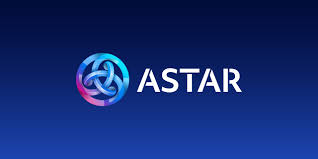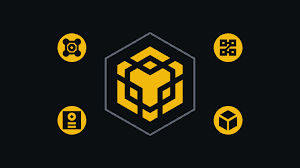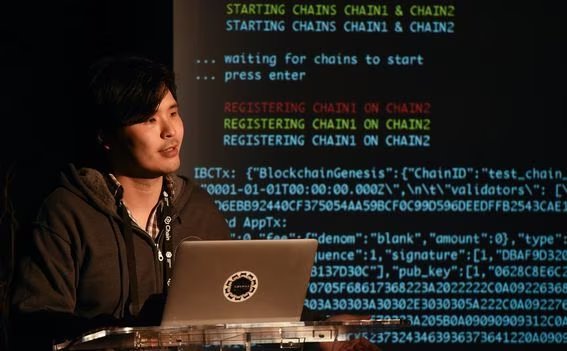TL;DR: With a new update or project being released almost every day, it’s clear the crypto ecosystem is constantly evolving. Stacks has gone through a lot of ups and downs to reach the level it’s at today — but it’s just the beginning. Knowing what brought it here and why it was created will lead you to make better decisions when investing or simply using Stacks.
In this article, we’re gonna dive into the Stacks ecosystem, answer all the $STX related questions and even more. Prepare yourself for a history lesson and a journey to the future of Stacks!
What is Stacks (STX)?
Stacks is a Layer 1 blockchain created in 2013 by Muneeb Ali. It is a smart contract platform that leverages the Bitcoin blockchain to settle transactions.
Bitcoin is the oldest and strongest sovereign blockchain. The network is a tamper-proof source of truth that stood the test of time. In order to achieve its resilience, Bitcoin maximizes security and decentralization to the detriment of scalability. Bitcoin’s scalability is limited to 7 transactions per second. This is because of its internal mechanics and the way its consensus mechanism works.
The concept of blockchains is not new, and Stacks is one of many such networks. The idea started in 2008 with the release of Satoshi Nakamoto’s Bitcoin Whitepaper. This kicked off the subsequent creation of many different types of networks under the same “blockchain” terminology. Despite being similar in concept blockchains have all different architectures and use cases. What all have in common — including Stacks — is that they have to be secure.
Security is the ability of a blockchain to prevent attacks and penalize malicious actors. This is usually done through their consensus algorithm and the mechanism they use to reach finality.
Finality is achieved when a block has been created and is now immutable, meaning that nobody can change the date inside. Over time many different mechanism have been designed, ranging from Proof of Work, Proof of Stake to novel ones called Proof of Spacetime. Each one hopes to achieve the best way of securing the network they are built for.
Stacks expands on Bitcoin’s settlement properties and introduces a couple new functionalities.
The first one is extending Bitcoin’s scalability by running a parallel blockchain. The Stacks blockchain transactions can scale independently of Bitcoin because they only depend on Bitcoin for finality. Transaction on Stacks are bundled into a single transaction that gets settled on the Bitcoin network. As a result, sending a transaction on Stacks comes with the same security guarantees offered by Bitcoin.
The second one is the addition of smart contracts on the Bitcoin blockchain. Stacks has been created with the goal of being an alternative to Ethereum running on Bitcoin network.
Ethereum has been created in 2014 and introduced the concepts of smart contracts. These are small applications that run inside a virtual machine called the Ethereum Virtual Machine. The EVM allows for a blockchain to process more than simple token transfers. To give more info, it opened up the possibility to run applications in a decentralized manner.
Applications usually run in the cloud or on your computer, so running them on a blockchain was unheard of at the time. This makes them uncensorable (nobody can stop them) and ensures they’re always online — as long as the chain they run on is processing transactions.
While similar to Ethereum’s smart contract functionalities, it implements some adjustments.
The first one is making it easy to understand what the program will do before executing it. On top of enhanced clarity, Stacks adds support for types and type checker to eliminate classes of bugs like unintended casts and reentrancy bugs. This offers better predictability and security.
The second one is a concept called Stacks subnets, released in 2022 by the Hiro team. Subnets are sovereign networks that settle their transactions on another Stacks (STX) chain. Sovereign means they are separate and do not occupy space on the main Stacks network. Because they are separate, they can have their own rules and its own set of validators.
Subnets are natively interoperable across the broader Stacks ecosystem, this is how they differ from an entire separate blockchain. This brings advantages to both the subnet as well as the main Stacks (STX) chain, which is able to process more transactions.
The consensus mechanism that Stacks uses is called Proof of Transfer, a unique algorithm between two blockchains. Proof of Transfer uses Bitcoin as the base chain and Stacks as the connected chain.
It might come as a shocking but in the Stacks blockchain, miners don’t actually mine anything. Instead, BTC miners commit already mined BTC to generate new STX tokens. Miners need to commit BTC just to have the chance to mine STX and this chance is partly random and partly based on how much BTC an individual miner has committed.
This operation depends on depends on two critical factors. One is whether the miner gets selected to mine a block of STX. If other miners commit more BTC, chances are they will get selected more often.
The second factor is the relative price of STX vs BTC. If the Bitcoin price goes up while STX stagnates, this could lead to miners choosing to keep their BTC instead of committing it to Stacks.
Stacks is powered by the STX token, a central part of the Stacks ecosystem. STX is an deflationary token due to the way its tokenomics have been planned. This means that new STX coins are created with each block and the total supply is capped. The Stacks inflation rate sits currently at around 4.5% and is expected to drop over the years.
The issuance of STX tokens follows a halving schedule that mirrors that of BTC and means that a miner’s reward per block will drop from its current 1,000 STX down to 500 STX, then 250 STX, and finally, 125 STX. Once it reaches 125 STX, this will remain the reward for mining indefinitely.
The tokenomics of Stacks also specifies a maximum amount of tokens that will ever be created. The maximum amount that will ever be minted by the protocol is 1,818,000,000 STX
For more details about how you can earn more Stacks by running a validator node at home check out our Stacks Mining & Staking guide. It includes the exact steps and best methods of earning more crypto like $STX in 2024 and beyond.
When was Stacks (STX) created?
Stacks (STX) was created during Muneeb Ali’s academic journey at Princeton University.
Work began on the Stacks chain in 2013, but in between that, a couple of important events happened. Most events revolve around the Stacks CEO and Founder, Muneeb Ali.
The first meaningful event is the creation of OneName, a protocol that replaces lengthy Bitcoin addresses with human-readable social handles. Created in 2014, OneName was looking to simplify crypto payments while keeping the infrastructure decentralized.
Bitcoin addresses are strings of 27 to 34 alphanumeric characters that are randomly generated by an algorithm. They are designed to be pseudonymous and secure. But for the average user this is rather confusing. Back in the days, sending a Bitcoin transaction to your friend required you to save this string of characters, and tag it with your friend’s name. If you transcribed one character wrong, the risk was for the transaction ending up in a different wallet, without being able to revert it.
This was a major obstacle to mass adoption, which is why OneName created a protocol that converted this: “1PNE8fxiLbxTwh8vpBfdPKXnQADn8sFVnK” into “Alice.bit.”
As simple as it sounds, the actual implementation was made with the ethos of decentralization in mind. Specifically, OneName didn’t keep any information about users' private keys. Despite the brilliance of the idea, OneName was running on an antiquated blockchain, called Namecoin. The wallet developed by the Namecoin team was clunky, and there were no tutorials or customer assistance. All these issue translated into a bad user experience for OneName. The team decided to move to Bitcoin network, but took a step back and reassessed the design of their protocol.
Another meaningful event is professors Muneeb Ali doctoral thesis, titled “Trust-to-Trust Design of a New Internet.”
Released in 2017, it proposes a model for a decentralized web secured by blockchains instead of servers. Millions of servers around the world are responsible for fetching data. The server structure worked well in the early days, as there were few internet users. Any issue could be easily addressed, and hackers generally didn’t oppose a threat. Fast-forward to 2022, every modern service requires an internet connection, making it a vital to have unrestricted access.
The internet started as an inter-network of different packet-switched networks in the 1970s. Since the beginning, the internet was decentralized by design. Nodes on the internet were designed to talk to each other directly without relying on any central services that controlled internet traffic. It wasn’t until 1985 when the Domain Name Service (DNS) became an essential component of the internet.
The DNS is a federated network that that introduced human-readable names, like blocktalk.com instead of IP addresses, for connecting to other nodes. The network names are owned by administrators who can decide who and when a website can be accessed. DNS was seen as a feature at the time rather than a flaw. By replacing the IP addresses with an easy-to-read domain, users could easily identify the website they wanted to surf.
It’s safe to say that the original internet design didn’t account for trust and security. Over time, trusted resources like DNS and Certificate Authorities (CAs) became a part of the core network. Centralization didn’t appear as a major issue until the last decade, when security issues have started to show up. Authoritarian governments like China can now restrict access to websites at large scale. Hackers can hold entire companies hostage by encrypting their data in exchange for ransoms.
According to Muneeb Ali, we are currently living in the dark ages of the internet. This is because the entire web is basically owned by a few entities. All our data is passing through a corporation-owned server, which gets to decide the flow of information on the web. This gives entities like Google tremendous power, hence its unofficial motto “don’t be evil.” In 2018, Google removed this motto, confirming the fears that the internet is no longer a free place.
Muneeb’s paper proposes a solution for a decentralized web powered by blockchains instead of servers. Blockchain networks are open membership networks that store data logs. These data logs are organized into blocks that are cryptographically linked together in a hash chain. In other words, you can’t modify the previous blocks without changing the entire blockchain. This represents a strong guarantee for the authenticity of data.
Furthermore, blockchain data is distributed randomly on all computers connected to the network. As long as one node has a copy of the blockchain, it can survive any nation state attack. In order for the government to shut down a blockchain, they would have to find every possible node in the world, and shut it down manually.
Based on his experience with OneName, Muneeb designed a new blockchain system called Blockstack, which ran on the most secure blockchain in existence, Bitcoin. Unlike previous blockchain-based systems, Blockstack separates data storage from data processing. In practice, Dapps are run locally on the user’s browser, and users continue to own their data (text, images, videos, files, etc.).
The first version of Stacks had the Proof of Transfer consensus and was limited to integrating the Bitcoin blockchain. Its second iteration, called Stacks 2.0 opened the way to staking.
After validating their idea, Muneeb Ali together with his co-founder began building Blockstacks’ blockchain and codebase. By the time Muneeb published his thesis in 2017, Blockstack had already secured $75 million in funding and was well on its way for a public token sale. In 2019, the project raised $80.5 million, becoming the first SEC qualified token offering in the US. With fresh funding, Blockstack was able to focus on delivering its vision of a decentralized internet.
Who created Stacks (STX)?
Stacks was created by Muneeb Ali together with Ryan Shea at Princeton University. Ryan Shea left the project in 2018 leaving Muneeb to take the role of CEO at Stacks.
Muneeb Ali is a computer scientist born in Pakistan. He moved in to the US with his parents at a young age, and he became obsessed with the internet ever since his father bought him a computer, as a child.
Muneeb Ali studied at the Lahore University of Management Sciences between 1999 and 2003, where he graduated with a Bachelor’s Degree in Computer Science, Mathematics. In the following years, he completed his PhD in Computer Science at Princeton University.
Upon graduation, Ali spent his formative years working in academia on ways to improve existing internet protocols. After a chance encounter with his future co-founder, Ali diverted away from his research to explore how the decentralized web might provide a solution to digital rights for all. The two young students decided to start a long journey of solving the foundational problems of today’s internet. When things really started to crystallize, they went through Y-Combinator in summer 2014, and raised a round of seed investment.
The name of the project was OneName, an early Bitcoin application that enabled decentralized names and profile pages. Ali explained the concept as follows: "If you're using the bitcoin analogy, right now people keep their money in banks. With data, these banks or third parties are companies like Facebook and LinkedIn. App developers that want to use this data now have to deal with [these companies].”
A challenge at the time was to simplify the Web3 experience while keeping the protocol decentralized. The first step was to make the protocol open source and invite developers to provide feedback. OneName ran on Namecoin protocol, the first fork of Bitcoin. The technology was developed in order for actual data to be stored on the blockchain as opposed to simple transactions, which was fitting for that OneName set out to do.
After one year of building on Namecoin, the network was at risk of centralization, with 70% of the hashing power controlled by a single miner. To solve this issue, in 2015, OneName switched to the Bitcoin network and rebranded to Blockstack.
The project still had a community of 750 members as it became the largest non-financial application running on the Bitcoin blockchain. With a more financial appeal under the name Blockstacks, the project went through a building phase. The project has been in development for almost 8 years, and the first half of its existence consisted of rigorous review by academics at Princeton and Stanford.
To promote awareness for the project, Blockstack hosted multiple conferences, which featured key public figures inside and outside of the crypto space, including Bitcoin educator Andreas Antonopoulos, and even Edward Snowden. “Can’t be evil” became Blockstack’s official motto, and in 2019, the Blockstack team even purchased a billboard advertisement across the street from Google’s California headquarters, showcasing that motto.
The project underwent a full rebrand in October 2020. First, the community rebranded the Blockstack network and application ecosystem to the Stacks Ecosystem. Then, Blockstack PBC, the development team, changed its company name to Hiro PBC and shifted its focus from guiding the Stacks blockchain to building developer tools for the network.
How is the Stacks (STX) token used?
The STX token is the native token for the Stacks network. Most assets in the Stacks ecosystem are denominated in STX, which makes it the default unit of account.
STX is the fuel that powers transactions and block creation on the Stacks chain. We sometimes refer to it as “gas.” Its primary use case is securing the network and keeping actors aligned to the same principles.
Making a transaction on the Stacks network requires a small fee in STX, usually around 0.00018 STX. Because Stacks has a quick time to finality and processes more transactions per second the gas fees quickly add up. This small fee is paid by users and goes to validators for doing their work.
Recently, Stacks has announced the release of Stacks “Subnets,” which are smaller chains connected to the Stacks main chain. Subnets can have their own security and consensus rules independent of the Stacks main chain.
If a subnet wants to be secured by Stacks, the users also have to pay STX. This ensures an infinitely scalable demand for the STX token.
Users interact with a specific subnet by depositing and withdrawing assets from a subnet smart contract that exists on the Stacks mainchain. Ultimately, it’s up to the individual user to decide which subnet they want to use, and no matter which they choose, all subnets settle back on the Stacks blockchain, which in turn settles on Bitcoin.
Stacks is currently listed on multiple exchanges. The major ones are Binance, Coinbase and Kraken. If you want to skip ahead and learn how to earn more Stacks by running a validator node at home check out our Stacks Mining & Staking guide. It includes the exact steps and best methods of earning more crypto like $STX in 2022 and beyond.
Who is developing Stacks (STX) now?
Development on Stacks started in 2013 by a team of researchers at Princeton who later spun out into Blockstack PBC. After validating their idea, Muneeb Ali and Ryan Shea established Blockstack PBC as a for-profit company with their headquarters in New York.
In 2020, they’ve expanded their mission to provide infrastructure tools for building on top of Bitcoin. A rebrand was needed to reflect their vision, and Blockstacks PBC became Hiro Systems PBC. The core team is made of Muneeb Ali, Alex Miller (CEO), and Diwaker Gupta (CTO).
Hiro is an ode to the company’s history. The name is inspired from the main protagonist in Snow Crash, a science fiction novel where Hiro jumps back and forth between dystopian Los Angeles and a virtual world called the Metaverse. Snow Crash is considered to be a cypherpunk classic, incorporating the concepts of anarcho-capitalism and predicting the hyperinflationary path that governments are headed towards.
Throughout the story, Hiro connects to themes like cryptography, privacy, digital ownership, which pretty much ties in with the scope of Stacks. After all, who wouldn’t want to contribute to the creation of tools that free the internet?
Speaking of contributors, Stacks is encouraging the development and feedback from open source contributors. It has an entire GitHub section dedicated to how you can propose code improvements to the protocol. The initial codebase was in development for almost eight years, half of the time being under academic review from Stanford and Princeton researchers. However, the long-term success of Stacks 2.0 depends on users’ participation. Currently, their GitHub lists 12 core contributors and its code has been formed more than 500 times. Looking at the Stacks website, there are more than 80 Dapps building on the protocol.
In 2020, the team decided to launch Stacks Foundation to help expand the Stacks ecosystem. The board is made of three members with extensive experience inside and outside the crypto industry. The Foundation is tasked offering support for startups and making sure projects follow the principles of the protocol.
Like any successful blockchain network, it is essential that Stacks amasses a strong community of validators that could maintain the network. To attract validators and builders, Hiro started offering grants.
The initial sponsorship budget starts from 20,000 STX and can go up to 100K+ depending on the complexity of the project. Besides offering grants, Stacks Foundation is looking to help startups with additional resources in the form of educational materials and research funding.
If you are interested to become a contributor to the protocol, you can participate in online events such as hackathons and community calls, or in-person events such as crypto conferences.
Governance of the Stacks protocol is done off-chain. This means token holders have a say in the direction of the protocol via Stacks Improvement Proposals (SIPs), but the actual implementation is done by the core developers. Unlike other crypto projects, Stacks is taking a more hands-on approach towards governance. The team wants to get in touch with every token holder via community calls before designing a more standardized mechanism.
The latest proposals are publicly listed on their forum along with transcripts of previous community calls. As Stacks progresses and more stakeholders decide to get involved, the team will likely implement a streamlined solution to governance.
What are the latest updates on Stacks (STX)?
Stacks in 2019
2019 was a successful year for Stacks in terms of development and economic prosperity. The first half of the year was dedicated to organizing the project’s token sale. According to Muneeb Ali, token sales in the US were a sensitive topic. Around that time, the SEC was taking heavy action against ICOs, ordering them to cease the sale and pay exorbitant fines. The team walked on thin ice, as they took all measures to ensure they are compliant.
On April 11, 2019, Blockstack PBC, the developer of Stacks, announced they have filed an offering statement with the SEC to conduct a $50 million token offering using the SEC Regulation A+ framework. The effort had costed them 10 months of hectic work and $2M in legal fees, what Muneeb jokingly called “our donation to the crypto industry.”
Under the Regulation A+ framework, Blockstacks was able to raise more funds with fewer disclosure obligations than in a traditional IPO. For the community, the Reg A+ framework was a blessing, as they could participate along with accredited investors. Previously, the company raised $5M in VC funding and $47M through a subsequent offering.
The public token sale was a massive success, with $80 million raised from thousands of investors all over the world. Investors received $STX token, which was legally declared a utility token. With STX, users could use Stacks’ native dapps, stake the tokens and register a digital identity with the network.
On the development side, Blockstack worked relentlessly to improve its smart contracts. The project fostered a community of 300 developers who helped weed out major bugs. So far, Blockstacks had a working version of its own block explorer, a native wallet, and an app to simplify the mining process. The concept of Blockstacks had evolved since its inception. With new technical challenges and solutions, it was time for the project to migrate from Bitcoin to its own network.
For the remainder of the year, Stacks team went on a tour de force to create awareness about their project. They’ve engaged with angel investor Naval Ravikant and Neal Stephenson, the author of the cypherpunk book series Snow Crash. The team preached about the dangers of the centralized internet while offering Stacks as a decentralized alternative.
Stacks in 2020
In 2020, Blockstacks made a series of adjustments to their branding. The team did a full revamp of their website and changed their name from Blockstacks to just Stacks. Over the course of almost 8 years, the project went from OneName, to Blockstacks, only to settle on the unified version called Stacks. Their mission of decentralizing the internet stays the same, and it was time for their protocol to go through the same change.
Stacks is decentralized by design. The protocol is secured by hundreds of validators since its inception. Since 2018, the team laid out its plan to decentralize its governance process, but they first had to get the protocol off the ground, and deal with the regulatory framework of the STX token sale. All the legal duties have been assigned to Blockstack PBC, the development company. In addition, Blockstack PBC was also responsible for setting up the legal entity of Stacks Foundation.
Now that the protocol was complete, Blockstack PBC took the opportunity to delegate some of its attributions under the Stacks Foundation. Specifically, stakeholders will start to have a say in the implementation of future upgrades. Meanwhile, key contributors would join smaller created entities such as New Internet Labs, Contribution Entity, Independent Investment Fund and Independent App Developers. Each of these entities plays a role in the Stacks ecosystem, and more importantly, they are focused on specialized parts of the infrastructure.
In another attempt to unify the brand, Blockstack PBC rebranded to Hiro. The decision comes in line with Hiro’s narrower developer focus, indicating that they are now just another organization within the broader Stacks ecosystem. If that’s a bit confusing, let’s recap: Hiro is the original development company behind the protocol, Stacks Foundation is responsible for offering grants, and the newly formed entities are specialized on specific infrastructure projects within Stacks.
Stacks in 2021
2021 was Stacks’s best year to date, reaching an all time high of $3.61. This was heavily influenced by a few key events and updates.
On January 14, Stacks celebrated a major milestone: The Stacks 2.0 Mainnet Launch. Its second iteration brings a new programming language called Clarity, which gives developers a safe way to build complex smart contracts where the code itself clearly shows what the program will do when run, hence the name.
Beyond its technical advancement, Stacks 2.0 will allow users to earn BTC by staking STX. The protocol wasn’t mining Bitcoin. Instead, it was paying its users with bitcoins from its treasury for securing the protocol. With staking rewards paid in BTC, Stacks 2.0 went full circle on Satoshi’s design: network transactions are settled on Bitcoin, and $BTC is now an integral part of the ecosystem.
Complex smart contracts on Bitcoin was a dream until Stacks. Now, developers can build their dapps on Stacks and have them secured by the most powerful blockchain network in existence. To this day, Stacks stands as a unique project that appeals even to the Bitcoin maxis. And the Bitcoin Miami conference was the perfect place to showcase the protocol.
The project was well received by the Bitcoiners, who applauded the idea of DeFi on the Bitcoin network. People went crazy during the conference. Max Keiser was screaming from the top of his lungs “F u Elon,” Michael Saylor portrayed Bitcoin as a religion.
The entire event started to look like a cult gathering. Then, Francis Suarez, the mayor of Miami announced that his city will have its own cryptocurrency powered by Stacks. Dubbed MiamiCoin, the currency would work similarly to STX. People can stake MiamiCoin to support their city and earn BTC. Miami is one of the 3 cities that take part in the project led by CityCoin.
What followed next was a festival of token listings. STX was making its way into the hands of newcomers, who were eager to “stack” their tokens in exchange for Bitcoin. For the old-time Stacks holders, it was a well deserved celebration. But the team was focused on its next major undertaking: scaling Stacks.
In spite of what clever marketing might make you believe, blockchains do not scale. There will always be a tradeoff between decentralizations, security and speed. In the case of the Stacks blockchain, very specific decisions to ensure security and decentralization were made, necessitating a tradeoff in speed and capacity. By the end of the year, Stacks was operating at an artificially low capacity to ensure the stability of the network. While scaling plans were well under discussion, the 2021 bull market took them completely by surprise. The blocks went full months after the release. This was still better than a ghost town, but it meant scalability instantly reached high on their priority list.
To solve this issue, the team had come up with a concept that resembles the Layer-2 implementation. Stacks would have another instance of its blockchain running on top of another Stacks blockchain. Capacity would increase by adding secondary Stacks blockchains called appchains. No matter how many appchains are added, they would settle on the main Stacks chain, which finalizes the transaction on the Bitcoin blockchain.
Stacks in 2022
The current year has been a powerful one for Stacks. With the release of Stacks 2.0 and the overwhelmingly positive reception, the team continued its work on scaling the protocol.
While the team was figuring out the implementation, more protocols deployed on Stacks. It started with NFT projects, and continued with DeFi projects. Stacks has its own smart contract language called Clarity. Unlike EVM compatible chains, Ethereum dapps would have to rewrite their code in order to accommodate with Stacks. Projects deployed so far worked without any incidents.
To help with the process, Hiro launched tools designed to help debug the code and make the transition smooth. If a DeFi project didn’t get to deploy on Stacks, it would create a liquidity market for the STX token.
The price of Bitcoin took a dive in 2022. Due to the direct correlation between STX stacking and BTC rewards, staking rewards have been affected as well, namely the dollar denominated rewards. Luckily for the STX stakers, the number of Satoshis rewards remained relatively stable (can’t lose if you don’t sell).
For the end of the year, Stacks planned to go through another upgrade, but it appears to have been rescheduled for 2023.
Stacks is in a constant growth cycle, and network participants like us can earn more $STX without too much hassle or technical knowledge, right from the comfort of our homes.
Learn how to do that in our Stacks Mining & Staking guide, which includes the exact steps and best methods of earning more crypto like $STX in 2022 and beyond.



































































